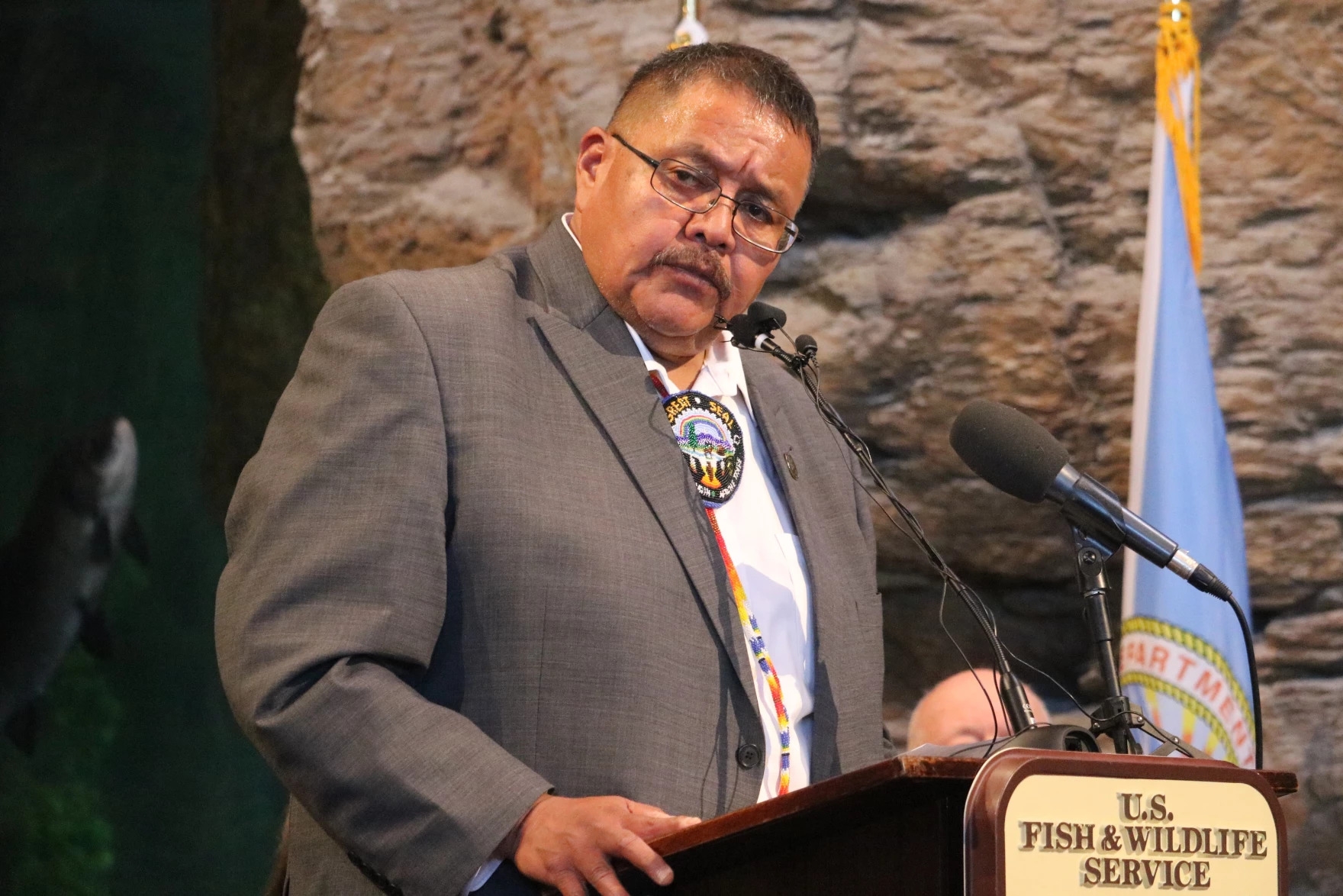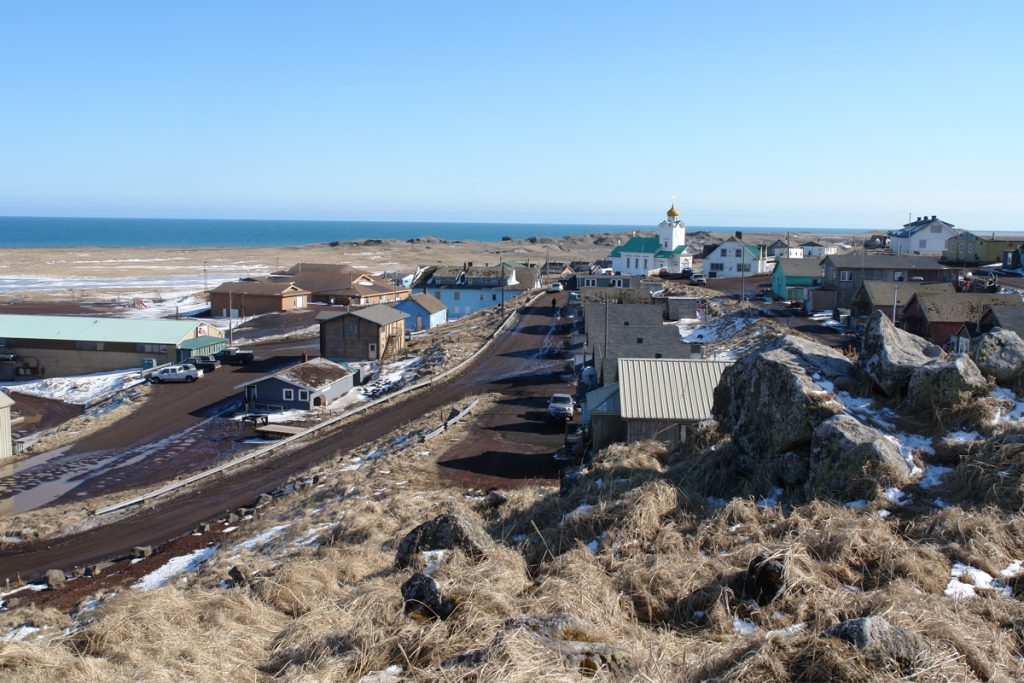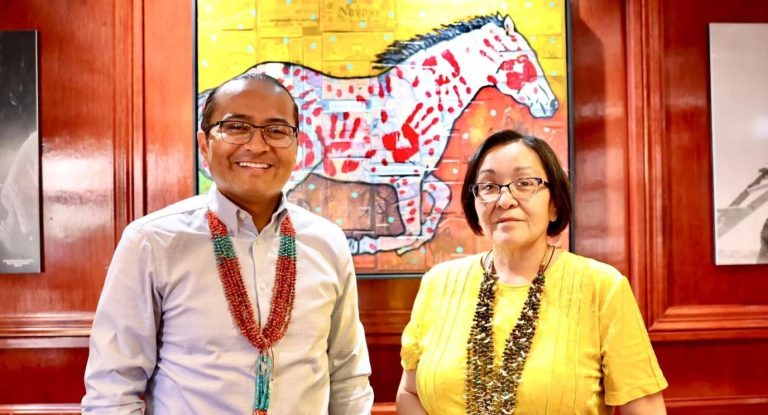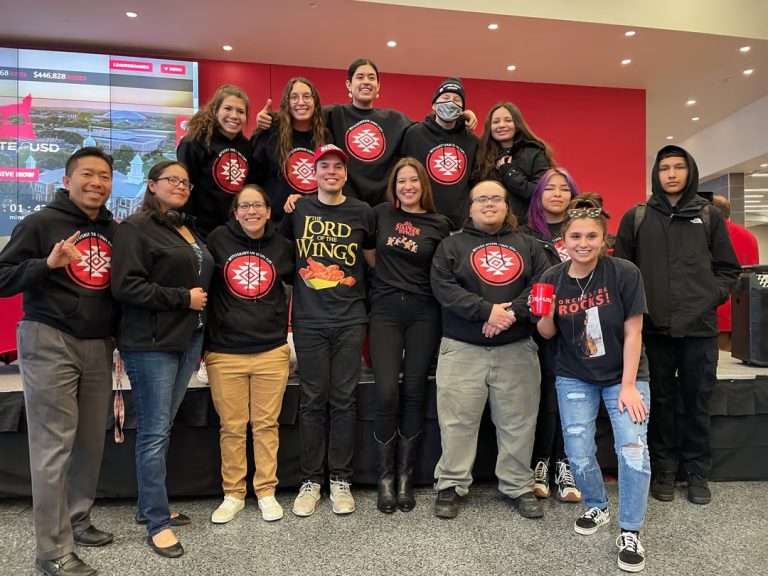Podcast: Play in new window | Download | Embed
Photo: St. Paul Island, Alaska. (mazaletel / Flickr)
With the stroke of a pen Thursday, President Donald Trump has rescinded more than $1 billion in Corporation for Public Broadcasting funds.
Buffalo’s Fire reports this loss will hit both large operations, including Koahnic Broadcasting, and especially small stations, such as KUHB on St. Paul’s Island in the Bering Sea.
Such stations are very tribally centered in their talk, music, and news programming – and managers are hard-pressed to know how to replace the lost funds while preserving Native culture and traditions.
An app called Adopt A Station, developed by former NPR employee Alex Curley, shows stations who’ve lost more than half their funding.
Users can contact these stations and make a donation.

White Mountain Apache Tribe Chairman Kasey Velasquez speaks about the significance of the Apache trout in Mesa on Sept. 4, 2024. (Photo: Gabriel Pietrorazio / KJZZ)
An Arizona tribal chairman is the subject of a federal probe, but as KJZZ’s Gabriel Pietrorazio reports, the reason behind why is still unclear.
The Bureau of Indian Affairs confirms its Missing and Murdered Unit is investigating White Mountain Apache Chairman Kasey Velasquez.
The unit’s special agents look into active cases, among other duties.
A former tribal policeman, school administrator, and substance abuse counselor, Velasquez was first elected chairman in 2022 and also heads the Arizona Indian Gaming Association.
His legal counsel, Kurt Altman, says that Velasquez will not be making any statements out of respect for the ongoing investigation that he’s fully cooperating with – adding that they look forward to a rapid conclusion.
The chairman is up for re-election next year.

(Courtesy Woodland Cree First Nation)
A First Nation in Canada is cashing in on an artificial intelligence (AI) data center to build up its economy, as Sol Traverso reports.
The Woodland Cree First Nation is building an AI data center on its traditional territory in Alberta.
The project will convert a partially completed power plant into a 650-megawatt, natural gas-powered data center.
Isaac Laboucan-Avirom is the Chief of the Woodland Cree First Nation. He wants to find other means to build a self-sufficient economy.
“You have to be diverse, right? We just don’t want to rely on oil and gas and forestry as some of our own source revenue. We want to see where we can be a part of wherever a solid opportunity is.”
There’s a push by world leaders for businesses to invest in AI.
Canada recently appointed its first minister of artificial intelligence – and President Donald Trump says he wants to expedite building permits for AI data centers and for the U.S. to be a global leader in AI.
Jon Horsman is the chief financial officer for Sovereign Digital Infrastructure.
“Data centers and AI, I think, is a huge opportunity for productivity growth across humanity, really, to access information to enable people to kind of move faster, move smarter. What’s really limiting the growth of AI is access to power.”
Horsman is partnering with Woodland Cree to develop this data center. He says there’s opportunities for First Nations and Indigenous communities with access to natural resources, since they require a lot of fuel and water to power them.
For example, a single large data center can consume between 1 million and 5 million gallons of water a day to keep their servers cool, according to a report by the Washington Post.
Chief Laboucan-Avirom says they’re going to be mindful of the environmental footprint this data center will have.
“Us as a First Nation having majority control of it – we will definitely want to see the best and world-class environmental protections.”
Laboucan-Avirom did not want to speculate on any financial projections of the center, but said that this will be built over several years and expects to bring in hundreds of jobs.
“I’m hoping that it is a game changer. A game changer meaning – I want to pave our roads. I want to help out our elders in ways that we’re not able to help them out. I want to invest in education, better housing, etc. So, the hope is to give some of these economic development opportunities a chance.”
Get National Native News delivered to your inbox daily. Sign up for our daily newsletter today.



